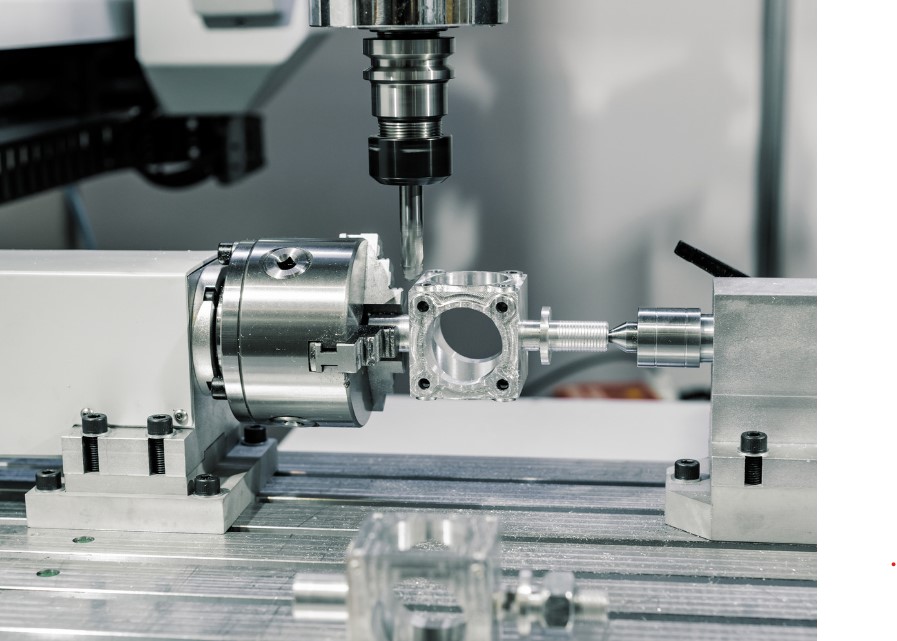In recent decades, Computer Numerical Control (CNC) machine machining has revolutionized the world of engineering and manufacturing. By integrating digital technology into traditional machines, CNC machining has emerged as a leading method of producing high-precision parts and components in various industries. This article explores the mechanics, benefits and numerous applications of CNC cutting to emphasize its transformational impact on modern engineering.

The mechanism of CNC Machining
CNC machining is an subtractive method of manufacturing, which means it removes the material from a solid block or workpiece to create the desired shape. The software used by computers to control the machine movements is pre-programmed. The code used for CNC machines differs depending on the type of machine and the complexity of the component being manufactured. But, the concept remains the same: High-speed cutters precisely cut away material to form the finished product.
Precision is one of the major benefits of CNC machining. Digitalization allows for extremely accurate and constant production. This minimizes human error, while ensuring the same quality of each batch. This level of precision is essential in areas such as aerospace or medical devices.
The role of digital computer systems for CNC machine operation
CNC processing efficiency and precision is a result of the integration of digital technologies. CNC machines are controlled by specialized software that automates the entire manufacturing process. The software converts computer-aided design (CAD) designs into a sequence of precise instructions that the CNC machine then follows to create the part. These instructions specify everything starting from the cut’s depth and the angle, to the speed of the tool.
In large industrial plants computers are typically integrated directly into CNC machines. This permits seamless communication and controls. This integration enables real-time monitoring, which ensures high performance and minimizes the amount of downtime. Automating CNC machining enables the continuous operation. This boosts productivity and reduces lead times.
CNC Machining and Its Benefits
CNC machining provides numerous advantages over traditional manufacturing methods. The ability to create intricate and complex parts with high accuracy is one of its most important advantages. The accuracy of CNC machining eliminates the requirement to make manual adjustments or work rework, thus reducing waste and improving efficiency. Additionally, CNC machines can operate in a continuous manner, which makes them perfect for production runs with high volumes.
CNC Machining is also flexible. Through the modification of the program it is possible to produce many different parts. This versatility is what makes CNC machines suitable for prototyping as well as mass production, allowing manufacturers to respond quickly to changes in market demand.
The automation of CNC machines also increases safety at work. By reducing the need for manual intervention, the chance of injuries and accidents are reduced. In addition, the high-quality of CNC-machined parts enhances product quality and reliability, adding to the satisfaction of the customer and enhancing brand reputation.
CNC Machining Services: Benefits for Industries
CNC machines are used in a myriad of industries, all benefiting from its precision, efficiency as well as its versatility. CNC machines used in aerospace manufacture components that have to meet strict safety and performance standards. CNC machines are utilized in the medical device industry to make complex surgical instruments and implant devices where precision is crucial.
CNC Machining can be used to make engine components such as transmissions, intricate interior and exterior components, and even intricate exterior and interior designs in the automobile industry. The electronics industry also gets benefit from CNC machine’s capability to create small, detailed parts for consumer electronics as well as communication devices. Even the jewelry and art industries leverage CNC technology to create intricate designs and unique pieces.
The future of CNC Machining
CNC machineries are expected to continue expanding as technology improves. CNC’s capabilities will be driven by advancements such as multi-axis machines as well as additive manufacturing and advanced materials. Additionally, machine learning and AI will enhance CNC machining efficiency.
CNC machining, with its unmatched accuracy, efficiency and precision, has had a profound impact on modern engineering and manufacturing. The capability to create intricate and precise parts makes CNC machining an extremely useful tool for many industries. CNC machining is set to continue to play an essential function as technology improves.
